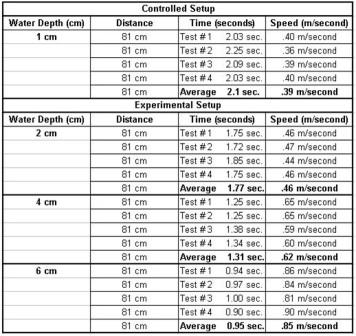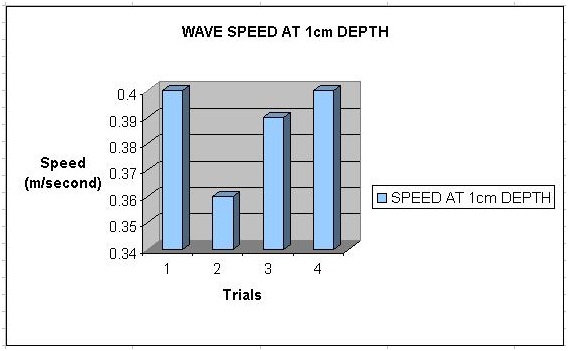





Published on Sep 16, 2023
The objective: The purpose of my project is to find out if the depth of water affects wave speed. Wave speed affects the power of ocean waves as a good source of energy.
This is important because the power of an ocean wave depends on its speed and this power can create a source of energy that can be changed into electricity. Devices are being developed and placed in the ocean to collect the energy from waves and change it into electricity that we can use. These are called wave energy farms. As the technology develops, and cheaper and better devices become available, more wave energy farms will be seen in the future. Wave energy is good because it does not pollute and it will never run out. It is a renewable energy source.
Here in Canada, the power of the ocean can be seen on all three coasts. Waves are created by ocean winds and travel thousands of kilometres across the ocean before reaching the coast. Right now, Canada is third in the world for developing technology to collect ocean energy. British Columbia has about 37,000 megawatts of potential wave energy along its coast, while the East Coast can produce wave power of about 146, 500 megawatts. This energy can take care of a large part of what Canadians use in electricity.
The purpose of my project is to find out if the depth of water affects wave speed. Wave speed affects the power of ocean waves as a good source of energy.
I think the depth of the water will affect the speed of waves. The deeper the water, the faster the wave will travel.
• Stream tray
• Water
• Stopwatch
• Ruler
1. Fill the stream tray with water to a depth of 1 cm.
2. Lift the tray up to a height of 10 cm and drop it, making a wave. Using the stopwatch, time how fast the wave travels the distance of the tray.
3. Record the distance and time.
4. Repeat steps 2 and 3 three more times.
5. Calculate the average time. Then, calculate the speed for each test by dividing the distance by the time. Then, calculate the average speed.
6. Fill the stream tray with water to a depth of 2 cm and repeat steps 2 to 5.
7. Fill the stream tray with water to a depth of 4 cm and repeat steps 2 to 5.
8. Fill the stream tray with water to a depth of 6 cm and repeat steps 2 to 5.
9. Note: The tray must be dropped from the same height of 10 cm each time it is done. This means that the wave will get the same energy from the drop each time.


The depth of water does affect the wave speed. My hypothesis was correct. The deeper the water, the faster the wave will move. When the water was 1 cm deep, the average speed of the wave was .39 m/second. At 2 cm depth, the average speed went up to .46 m/second. At a depth of 4 cm, the average speed went up to .62 m/second. The speed of the wave was the fastest in the deepest water at 6 cm, with an average speed of .85 m/second.
The deeper the water, the faster the wave because when the water is deep there is less friction acting on the wave from the surface of the ocean. The shallower the water, the more that friction from the surface will slow the wave down.
SPEED BALL
HTTP://EN.WIKIPEDIA.ORG/WIKI/SPEEDBALL
PAINTBALL BASICS
HTTP://WWW.WARPIG.COM/PAINTBALL/NEWBIE/ABOUTPB.SHTML
WIKI PAGE FOR EVERYTHING PAINTBALL
HTTP://EN.WIKIPEDIA.ORG/WIKI/PAINTBALL
THIS IS THE DANGEROUS POWER WEBSITE.
HTTP://WWW.DANGEROUSPOWER.COM/PRODUCTS_G4.PHP
THIS IS WHAT I MENTIONED ON THE RESEARCH PAGE!
HTTP://WWW.BESTPAINTBALLREVIEWS.COM/DANGEROUS-POWER-G4-REVIEW